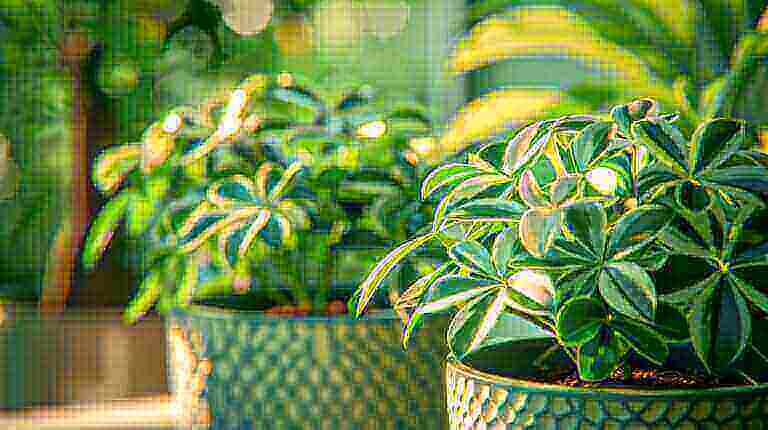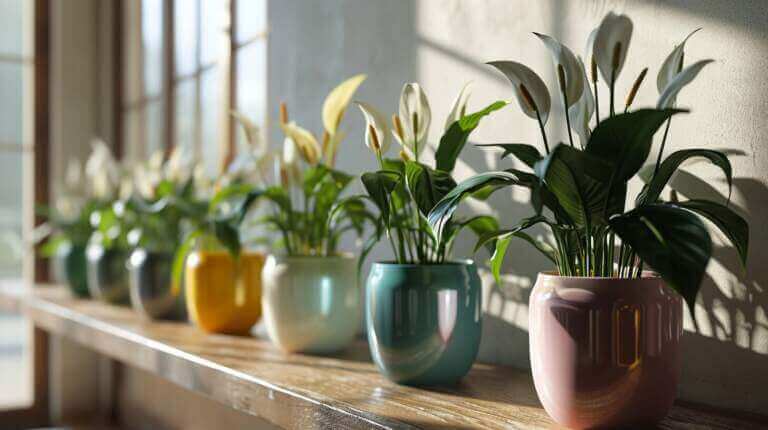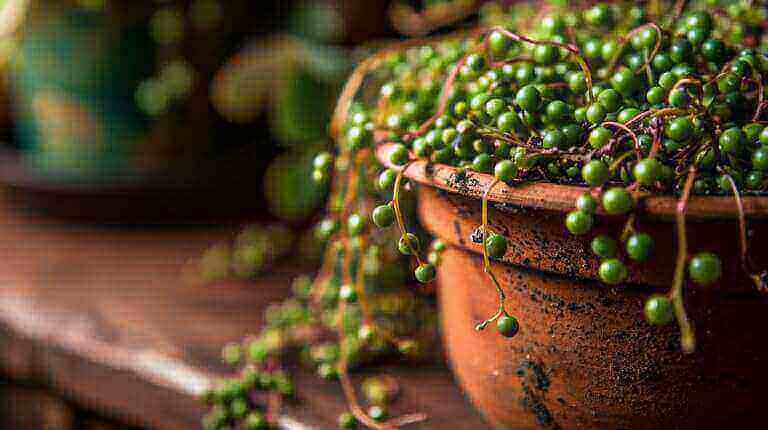What Is Philodendrons? An Overview How To Grow Philodendron Houseplant
Discover the lush and captivating world of philodendrons, a popular genus of houseplants that have captivated indoor gardening enthusiasts for decades.
These enchanting plants, originating from the tropical regions of the Americas, possess unique characteristics and features that make them perfect additions to any home decor.
In this comprehensive overview, we will delve into the history, varieties, care tips, and stylish ways to incorporate care for philodendron into your living spaces.
Join us as we explore the wonders of these versatile and vibrant plants.
Key Takeaways
- Philodendrons originated in the tropical rainforests of Central and South America.
- Philodendrons have large, glossy leaves in various shapes and can climb and vine.
- Philodendrons are relatively easy to propagate through stem cuttings and air layering.
- Regular care and attention, including proper watering and pest control, are essential for the health and longevity of philodendrons.
The History and Origin of Philodendrons
The history and origin of Philodendrons can be traced back to the tropical rainforests of Central and South America. These plants have evolved to thrive in the dense shade of the rainforest canopy, making them well-adapted to low-light conditions.
Their ability to climb and attach themselves to trees through aerial roots is one of their evolutionary adaptations that allows them to reach sunlight. This ecological significance is evident in their role as a vital component of the rainforest ecosystem, providing habitat and food for many organisms.
Philodendrons have also been cultivated by humans for centuries, appreciated for their lush foliage and ability to purify indoor air. Understanding the history and origin of Philodendrons helps us appreciate their unique characteristics and features, which will be explored in the subsequent section.
Characteristics and Features of Philodendron Plants
Philodendron plants exhibit a wide range of unique characteristics and features that make them popular choices among houseplant enthusiasts. These plants are known for their large, glossy leaves that come in various shapes, including heart-shaped, arrow-shaped, and lobed. They are also known for their ability to climb and vine, making them great choices for hanging baskets or trailing down from shelves. Philodendrons are relatively easy to propagate, with popular methods including stem cuttings and air layering. However, they can be susceptible to common pests such as spider mites and aphids. It is important to regularly inspect and treat philodendron plants to prevent infestations and maintain their health and beauty.
| Characteristics | Features | Propagation Methods | Common Pests |
|---|---|---|---|
| Large, glossy leaves | Heart-shaped, arrow-shaped, lobed | Stem cuttings, air layering | Spider mites, aphids |
| Climbing and vining growth habit | Trailing from hanging baskets or shelves |
Popular Varieties of Philodendrons for Indoor Gardening
Indoor gardening enthusiasts have a wide variety of popular philodendron species to choose from for their home decor. Some of the most commonly grown varieties include the Heartleaf Philodendron (Philodendron hederaceum), which features heart-shaped leaves and is known for its easy care requirements. Another popular choice is the Split-leaf Philodendron (Philodendron bipinnatifidum), which has large, deeply lobed leaves that give it a unique and tropical appearance. The Xanadu Philodendron (Philodendron xanadu) is also highly sought after, with its compact growth habit and attractive glossy leaves.
When it comes to fertilizing philodendrons, it is best to use a balanced liquid fertilizer every two to four weeks during the growing season. As for pests and diseases, common issues include spider mites, aphids, and root rot. Regularly inspecting the plants and providing proper care can help prevent these problems.
Now, let’s move on to essential care tips for growing healthy philodendrons.
Grow Philodendron Care Guide
When properly cared for and given the right conditions, philodendrons can thrive and bring beauty to any indoor space. However, like any plant, they require proper care and attention to ensure their health and longevity.
Common problems with philodendron care include overwatering, which can lead to root rot, and underwatering, which can cause the leaves to wilt and turn brown. To prevent these issues, it’s important to water philodendrons thoroughly but allow the soil to dry out slightly between waterings.
Additionally, philodendrons can be propagated through various techniques, such as stem cuttings or division. Stem cuttings involve taking a healthy stem with a few leaves and rooting it in water or moist soil. Division involves separating the plant into smaller sections, each with its own roots and stems.
Creative Ways to Decorate With Philodendron Plants in Your Home
One of the most effective ways to incorporate the natural beauty of philodendron plants into your home decor is by strategically placing a few of them in various rooms. Not only do they add a touch of greenery to your space, but they also provide numerous health benefits, such as improving air quality and reducing stress levels. To further enhance the aesthetic appeal of your home, consider incorporating vertical gardening and hanging planters. These innovative techniques allow you to maximize your space while adding visual interest to your walls and ceilings. In a vertical garden, you can create a stunning display by arranging different varieties of philodendron plants in a cascading pattern. Hanging planters, on the other hand, can be placed in any room to create a unique focal point and add a sense of whimsy to your decor. See the table below for some creative ideas on how to decorate with philodendron plants:
| Room | Placement | Plant Varieties |
|---|---|---|
| Living Room | Corner shelves | Philodendron scandens |
| Bedroom | Hanging planter | Philodendron Brasil |
| Bathroom | Wall-mounted planters | Philodendron micans |
| Kitchen | Window sill | Philodendron selloum |
| Office | Desk plant | Philodendron hederaceum |
Frequently Asked Questions
What Are Some Common Philodendron Varieties and Their Care Requirements?
When it comes to popular philodendron varieties, there are a few that stand out. The heartleaf philodendron is a classic choice, known for its heart-shaped leaves and easy care requirements. The velvet-leaf philodendron, as the name suggests, features velvety green leaves and thrives in low light conditions. Another commonly seen variety is the split-leaf philodendron, distinguished by its leathery, deeply lobed leaves. Regardless of the type, philodendrons generally thrive in bright, indirect light and prefer consistently moist soil.
Are Philodendrons Poisonous to Pets?
Philodendrons are popular houseplants known for their attractive foliage and easy care. However, it is important to note that philodendrons can be toxic to pets. The leaves of the plant contain calcium oxalate crystals, which can cause irritation and swelling if ingested by animals.
Symptoms of philodendron toxicity in pets may include drooling, vomiting, difficulty swallowing, and oral pain.
It is crucial to keep philodendrons out of reach of pets to ensure their safety.
Can Philodendrons Be Grown Outdoors?
When it comes to growing philodendrons, many people wonder if these popular houseplants can be grown outdoors. The good news is that certain varieties of philodendrons can indeed be grown outdoors, provided they receive the right care and conditions.
Outdoor philodendron care involves ensuring they have adequate sunlight, well-draining soil, and regular watering. Some of the best outdoor philodendron varieties include the Philodendron selloum, Philodendron bipinnatifidum, and Philodendron xanadu.
These stunning plants can add a touch of tropical beauty to any outdoor space.
How Do I Propagate Philodendrons?
Propagation methods for philodendrons vary depending on the specific species, but generally involve taking stem cuttings and rooting them in water or soil.
To propagate philodendrons, choose healthy stems and make a clean cut just below a node. Remove lower leaves and place the cutting in water or moist soil.
Provide indirect light and keep the soil moist until roots develop. Once rooted, care for propagated philodendrons by gradually acclimating them to bright, indirect light and maintaining appropriate watering and humidity levels.
Do Philodendrons Require a Lot of Sunlight?
Philodendrons are popular houseplants that are known for their lush green foliage and ability to thrive in indoor environments. When it comes to lighting, philodendrons prefer bright, indirect light. While they can tolerate lower light conditions, they may not grow as vigorously or produce as many leaves.
It’s important to strike a balance between providing enough light for photosynthesis and avoiding direct sunlight, which can scorch the leaves. Regularly rotating the plant and adjusting its position near a sunny window can help ensure even exposure to light.
What Is the Average Lifespan of a Philodendron Plant?
The average lifespan of a philodendron plant can vary depending on various factors such as care, environment, and species. With proper care, philodendrons can live for many years, with some reaching up to 20 years or more.
To ensure a long lifespan for your philodendron, it is important to provide it with the right conditions, such as indirect sunlight, regular watering, and well-draining soil. Regular pruning and fertilization can also help promote healthy growth and extend its lifespan.
What is a Philodendron?
Philodendron is a genus of tropical plants often used as indoor plants. They are known for their green leaves and are part of the family Araceae.
How many species of Philodendron are there?
There are about 450 species of Philodendron’s cultivar, each with its unique characteristics.
What does a Philodendron look like?
Philodendrons have green leaves that can be velvety or glossy. Some species have variegated leaves. The leaf veins are often prominent.
How do I care for my Philodendron?
Philodendrons are one of the easiest indoor plants to care for. They need indirect light, a warm temperature around 65-75 degrees Fahrenheit, and a moist potting mix.
How often should I water my Philodendron?
The plant needs to be watered when the top inch of soil feels dry. Overwatering can cause leaf yellowing and root rot.
How do I repot my Philodendron?
To repot your Philodendron, carefully remove it from its current pot and place it in a new pot with fresh potting soil. Be sure to water it thoroughly after repotting.
What Are the Key Features of Philodendron Plants That Distinguish Them from Pothos Plants?
Philodendron plants and pothos plants, known as pothos vs philodendron, possess distinct features that set them apart. While both are lush and vining plants, there are notable differences. Philodendrons exhibit glossy, heart-shaped leaves and often have a more upright growth habit, while pothos plants have larger, waxy leaves with a distinctive speckled appearance and tend to cascade or trail. Understanding these differences is crucial for plant enthusiasts seeking to choose the perfect addition to their indoor green spaces.
Can my Philodendron grow in low light?
While Philodendrons prefer bright, indirect light, they can tolerate low light levels. However, their growth may be slower in low light.
Why are the leaves on my Philodendron turning yellow?
Leaves on your Philodendron may turn yellow due to overwatering or lack of nutrients. Adjust your watering schedule and consider using a balanced fertilizer.







